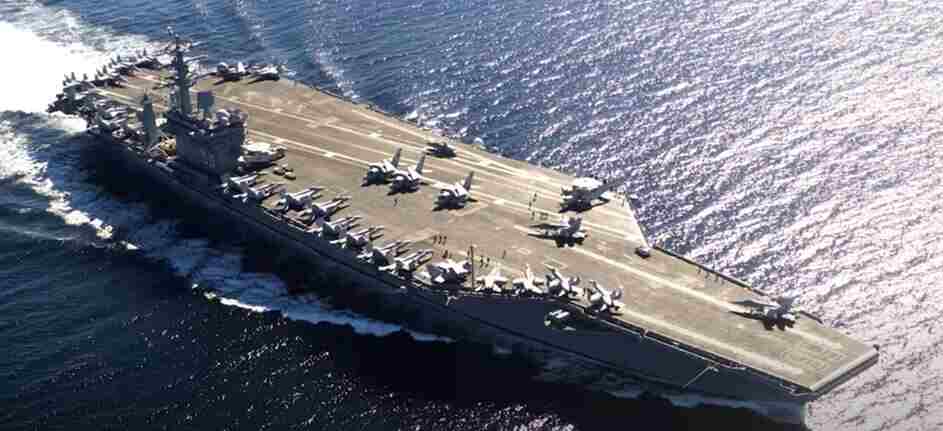Russia, a nation with a rich maritime history, has consistently strived to assert its dominance on the seas. One of the most formidable tools in achieving this objective is the Russian aircraft carrier.
These colossal vessels stand as symbols of naval power, projecting influence across vast stretches of ocean and contributing to the country’s strategic military capabilities.
History of Russian Aircraft Carriers
The journey of Russian aircraft carriers began with the launch of the first Soviet aircraft carrier, the Kiev, in 1975.
Since then, Russia has continued to develop and expand its fleet of aircraft carriers, with the Admiral Kuznetsov and its successor, the Admiral Gorshkov-class carriers, representing the pinnacle of Russian naval engineering.
Admiral Kuznetsov

The Admiral Kuznetsov, commissioned in 1990, is Russia’s only operational aircraft carrier cutoff its operation in 2017 but not for forever. It went for overhauls and modification and repairs and it is hoping that it will return back to the service in 2024. Multiple incidents and some other complexity making its return delayed.
This formidable vessel is classified as a heavy aircraft-carrying cruiser and serves as the flagship of the Russian Navy’s Northern Fleet. With a length of 305 meters and a displacement of around 55,000 tons, the Admiral Kuznetsov is a formidable force at sea.
Capabilities and Aircraft

The primary strength of the Russian aircraft carrier lies in its ability to deploy a diverse range of aircraft, including fixed-wing aircraft and helicopters.
The carrier is equipped with a ski-jump ramp at the bow, allowing aircraft to take off using a Short Take-Off But Arrested Recovery (STOBAR) method. The complement of aircraft includes the Su-33 and the MiG-29KR, both multirole fighters capable of air-to-air and air-to-surface missions.
Despite its capabilities, the Admiral Kuznetsov has faced challenges, including issues related to its propulsion system and the limitations of the ski-jump design. These challenges have prompted discussions within Russia about the need for a new generation of aircraft carriers.
Future Prospects: The Admiral Gorshkov-class

The Admiral Gorshkov-class, represented by the lead ship INS Vikramaditya in service with the Indian Navy, showcases Russia’s commitment to advancing its aircraft carrier capabilities.
The Admiral Gorshkov-class features modern design elements, including a more efficient ski-jump and an increased aircraft complement.
Russia’s future plans for aircraft carriers include the development of the Shtorm-class carriers, which are expected to be nuclear-powered and feature electromagnetic catapults for aircraft takeoff.
These advancements aim to address the limitations faced by the Admiral Kuznetsov and mark a new era in Russian naval aviation.
Geopolitical Significance
The presence of a capable aircraft carrier fleet is crucial for a nation’s geopolitical influence. Russian aircraft carriers provide the country with the ability to project power far beyond its shores, contributing to its status as a major player in global affairs.
These vessels enhance Russia’s maritime capabilities, allowing it to participate in a wide range of military and peacekeeping operations.
Conclusion
The Russian aircraft carrier, with its storied history and evolving capabilities, stands as a testament to the country’s commitment to maintaining a strong presence on the world’s oceans. As Russia continues to invest in advanced naval technologies, the future of its aircraft carrier fleet promises to be both dynamic and influential on the global stage.



1 thought on “The Russian Aircraft Carrier: A Symbol of Naval Power”